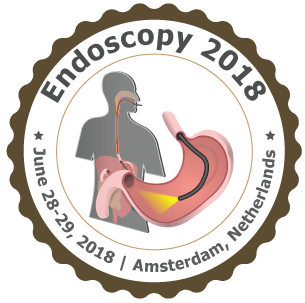12th International Conference on Abdominal Imaging and Endoscopy
Amsterdam, Netherlands

Slobodan Marinković
University of Belgrade, Serbia
Title: The anatomic and pathologic basis for the Abdominal Endoscopy
Biography
Biography: Slobodan Marinković
Abstract
Statement of the Problem: The normal anatomy and pathologic processes are crucial for the endoscopic examination and imaging of the abdominal organs.
Methodology & Theoretical Orientation: The abdominal organs were dissected in 4 cadavers, and their diseases and disorders were examined in 165 autopsies.
Findings: According to the anatomic examination, hiatus of the esophagus usually was at the T10 vertebra level, the cardiac opening at T11, the pyloric opening at L1, the superior duodenal flexure at 8–9 costal cartilages, the duodenojejunal flexure at L2, and the appendix opening at the lower part of the spinoumbilical line. The abdominal esophagus measured 1–2.5 cm in lenghth, the superior part of duodenum 5 cm on average, the descending part 8–10 cm, and the inferior part 10 cm. The major duodenal papilla was 8–10 cm distant to the pyloric opening. The inspection of these structures in autopsy specimens presented in one or more cases of the following pathologic processes or disorders: hiatus hernia, reflux esophagitis, Barett’s metaplasia, squamocellular carcinoma, and varices; the acute erosive gastritis, chronic atrophic gastritis, peptic ulcer, and various gastric adenocarcinomas; an obstruction of the hepatopancreatic ampulla, duodenal ulcer, gluten-sensitive enteropathy, ischemic intestinal disorder, carcinoid and metastatic tumors, and Crohn disease; diverticulosis, ulcerative colitis, acute appendicitis, adenomatous and non-adenomatous polyps, and various types of colic adenocarcinomas.
Conclusions & Significance: These findings are the basis for the endoscopic and imaging diagnosis, and certain therapeutic interventions.

